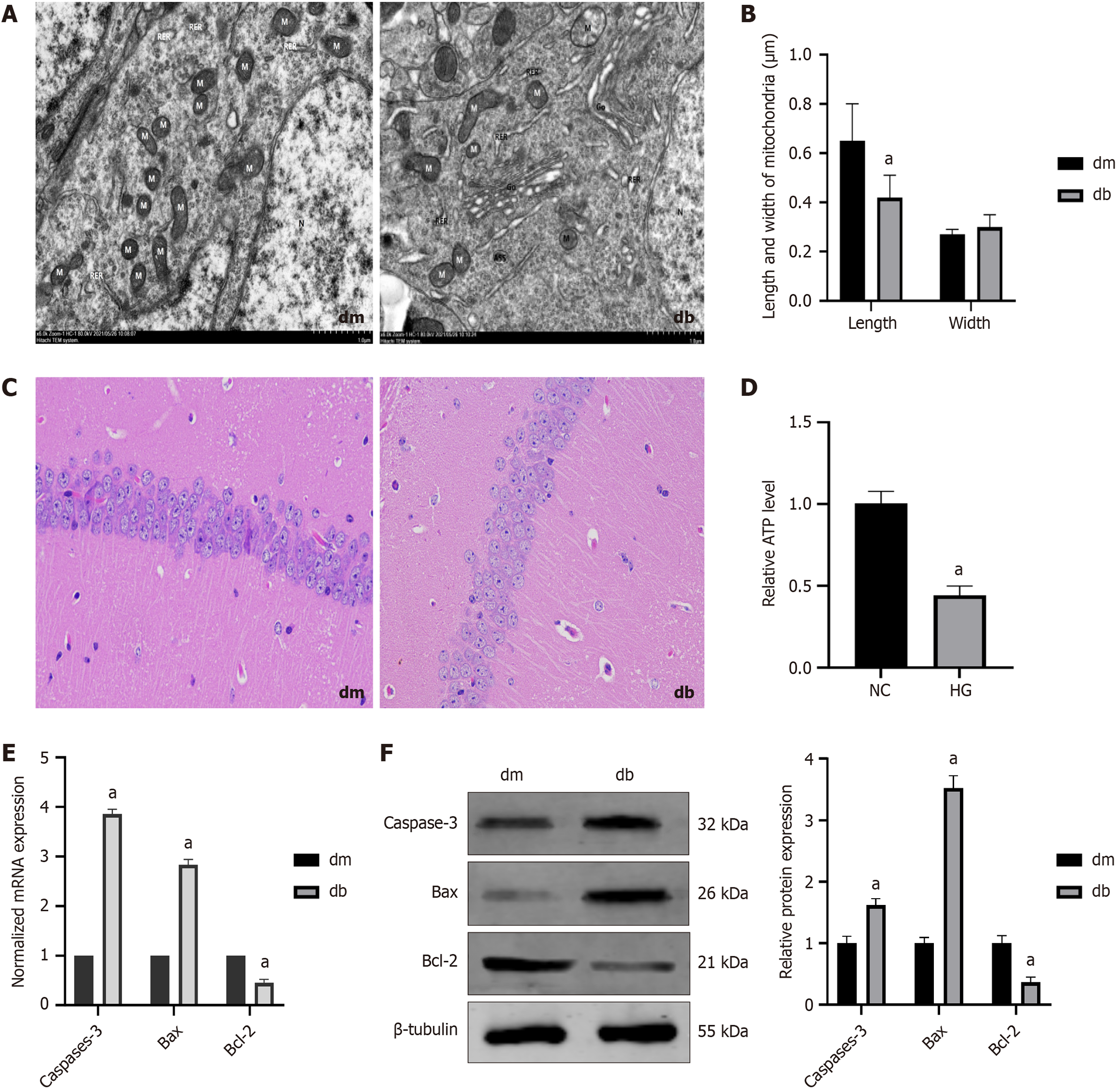Copyright
©The Author(s) 2025.
World J Diabetes. Aug 15, 2025; 16(8): 106833
Published online Aug 15, 2025. doi: 10.4239/wjd.v16.i8.106833
Published online Aug 15, 2025. doi: 10.4239/wjd.v16.i8.106833
Figure 4 Mitochondrial division increased, adenosine triphosphate synthesis decreased, and apoptosis-associated molecules increased in the hippocampus of diabetic cognitive dysfunction mice.
A: Transmission electron microscopy images show mitochondrial swelling, disrupted and reduced cristae, and increased mitochondrial fission in the hippocampal tissue of db mice group; B: Mitochondrial length and width (n = 20); C: Hematoxylin and eosin staining shows disordered hippocampal pyramidal cells and disrupted organelle morphology in the db mice group (400 ×); D: Relative of adenosine triphosphate level; E: The normalized mRNA expression of caspase-3, B-cell lymphoma 2 (Bcl-2)-associated X protein (Bax), and Bcl-2; F: The relative protein expression of The relative protein expression of caspase-3, Bcl-2-associated X protein, and Bcl-2. aP < 0.05, compared with dm group. Data presented as mean ± SEM. dm: Control group; db: Diabetes group; NC: Normal control; HG: Hypertonic group (100 mmol/L glucose); Bax: B-cell lymphoma 2-associated X protein; Bcl-2: B-cell lymphoma 2.
- Citation: Li J, Gao M, Wang JX, Li HY, Wang P, Yuan F, Liu AJ, Zhang SY. Troxerutin improves diabetic cognitive dysfunction by inhibiting mitochondrial fission mediated by transient receptor potential melastatin 7/calcineurin/dynamin-related protein 1ser637. World J Diabetes 2025; 16(8): 106833
- URL: https://www.wjgnet.com/1948-9358/full/v16/i8/106833.htm
- DOI: https://dx.doi.org/10.4239/wjd.v16.i8.106833









